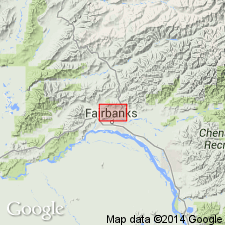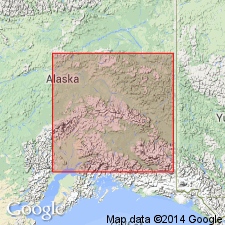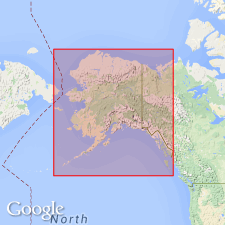
- Usage in publication:
-
- Ester ash bed*
- Modifications:
-
- Named
- Dominant lithology:
-
- Ash
- AAPG geologic province:
-
- Alaska East-Central region
Summary:
Unit is named the Ester Ash Bed. Consists of a 6-inch-thick gray to white, pure glass volcanic-ash. Occurs in unnamed upland silt. Age is Pleistocene.
Source: GNU records (USGS DDS-6; Menlo GNULEX).

- Usage in publication:
-
- Ester Ash Bed*
- Modifications:
-
- Age modified
- AAPG geologic province:
-
- Alaska East-Central region
Summary:
Type section is designated. Is [enclosed] within the Fairbanks Loess and its valley-bottom equivalent the Gold Hill Loess. Age is thought to be early Illinoian.
Source: GNU records (USGS DDS-6; Menlo GNULEX).

- Usage in publication:
-
- Ester Ash Bed*
- Modifications:
-
- Age modified
- AAPG geologic province:
-
- Alaska East-Central region
Summary:
Ester Ash Bed is shown on table of correlation of local, nonglacial sequences in Alaska (table 3) as Pleistocene (Illinoian).
Source: GNU records (USGS DDS-6; Menlo GNULEX).
For more information, please contact Nancy Stamm, Geologic Names Committee Secretary.
Asterisk (*) indicates published by U.S. Geological Survey authors.
"No current usage" (†) implies that a name has been abandoned or has fallen into disuse. Former usage and, if known, replacement name given in parentheses ( ).
Slash (/) indicates name conflicts with nomenclatural guidelines (CSN, 1933; ACSN, 1961, 1970; NACSN, 1983, 2005, 2021). May be explained within brackets ([ ]).

